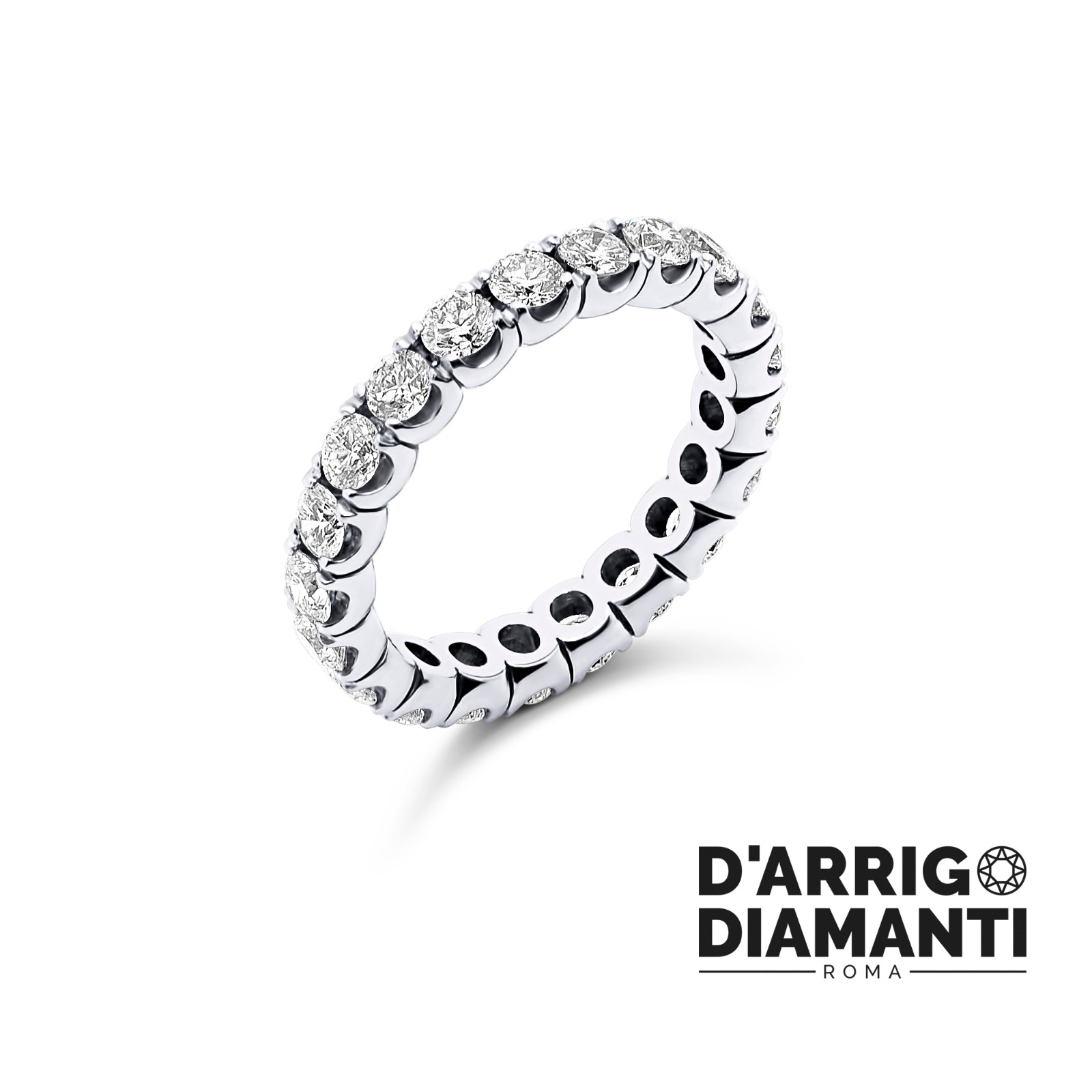We've identified the five biggest differences between white gold and platinum rings that you'll want to know before making any jewelry decisions:
1) Long-term care
A common misconception is that white gold and platinum metals will perform essentially the same over time because they look the same when purchased. This couldn't be further from the truth.
White gold it is a beautiful white metal and we often recommend it, but every smart consumer should know some of the disadvantages of this metal as it ages. A piece of white gold is not pure gold. When white gold is produced, yellow gold is mixed with white metals such as silver, palladium or nickel. Once the metals have been mixed together, a white gold piece will then be "rhodium plated" to give it a whiter, shinier finish. This is what makes a white gold piece the same as a platinum piece when both are in new condition.
It is very important to understand, however, that over time the rhodium plating finish will wear away and the jewelry will begin to show its natural yellow color. When this happens, you will need to have it rhodium plated again by a jeweler. Depending on how active you are and how often you wear the jewelry, this could start happening pretty quickly. There is a long-term commitment to maintenance when you agree to buy white gold.
Platinum however, it will age differently. To be considered platinum, a piece must contain 95% or more of the metal, making it one of the purest precious metals you can buy. Over time, platinum will fade differently. It won't turn yellow, like yellow gold; but it will start to lose its glossy finish and build a natural patina (more on that in a bit). Some people actually prefer this look because it will accentuate a diamond's brilliance and make it appear more brilliant. Similar to white gold, a piece of platinum can be brought back to life by a jeweler who can restore it to its original state simply by polishing it.
2) Duration and life span
It's no secret that platinum has long been described as the hardest and most durable metal for jewelry. Let's dive a little deeper into this idea. There is actually a difference in how platinum and gold scratch on the surface. When white gold is scratched, the gold is scratched off and lost.
When platinum gets scratched, the platinum is moved from one place in the ring to another and develops something called a patina finish. This type of finish will make your jewelry look like an antique. The metal of platinum can be repositioned with polishing because it doesn't actually lose metal like white gold.
Platinum's durability is one of its strengths as a precious metal. It will help keep your gemstones in place securely for life. In fact, platinum prongs are often used in rings made with less durable metals, such as white gold.
Because platinum is able to resist scratches and wear and tear, a platinum piece can last for generations. Platinum jewelry is easy to return to like new and can easily be resized or reconditioned if passed down.
3) Composition
You will mostly find jewelry in White gold offered in 14K (58,3% pure gold) or 18K (75% pure gold) versions. The gold will be mixed with other metals to form an alloy that is stronger than pure gold (also known as 24-karat gold). A 24K diamond ring is rarely sold because it would be very soft. That is why it is mixed with other metals to give it extra hardness. So, the 18K white gold option would be less durable because it's closer to 24K.
Platinum it is a very strong and heavy metal. The wearer of a platinum piece will have to decide if he can handle a heavier metal like platinum versus a lighter metal like white gold. The best way to test it is to try it to see if it's too heavy for you or if you don't mind. Platinum is the densest precious metal you can buy, so all of these factors will need to be considered.
4) Hypoallergenic potential
When comparing metals, you'll also want to think about the possibility that the metal may irritate your skin or cause an allergic reaction. Hypoallergenic metals will help reduce the chance of having an allergic reaction by minimizing potentially irritating substances.
Platinum it is actually the only true hypoallergenic precious metal you can buy, because it is 95% pure. So long as white gold it is made up of a mix of metals, some of these metals could easily irritate someone's skin if they have a particular sensitivity. If you know of any of these allergies or suspect you have one, stick with platinum.
5) Cost
One of white gold's biggest strengths over platinum is cost. Platinum will almost always be more expensive than white gold because it is 30 times rarer and much less mined than gold. To be more precise, 2.700 tons of gold are mined annually compared to 80 tons of platinum.
Also, platinum is denser than gold. The exact same ring would weigh more if it were made in platinum over white gold. This same platinum ring would also be much more expensive in platinum because precious metals are priced by weight.
Some of these factors play an important role in the price differentiation between platinum and white gold. Depending on what you're looking for in a ring, you'll need to weigh the cost and overall benefits of each metal to truly understand which option is best for you.

